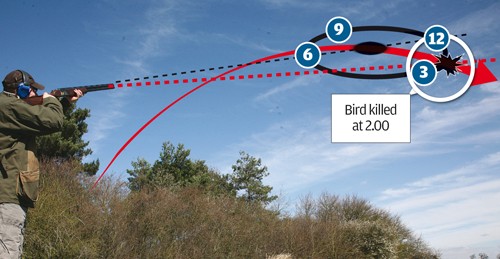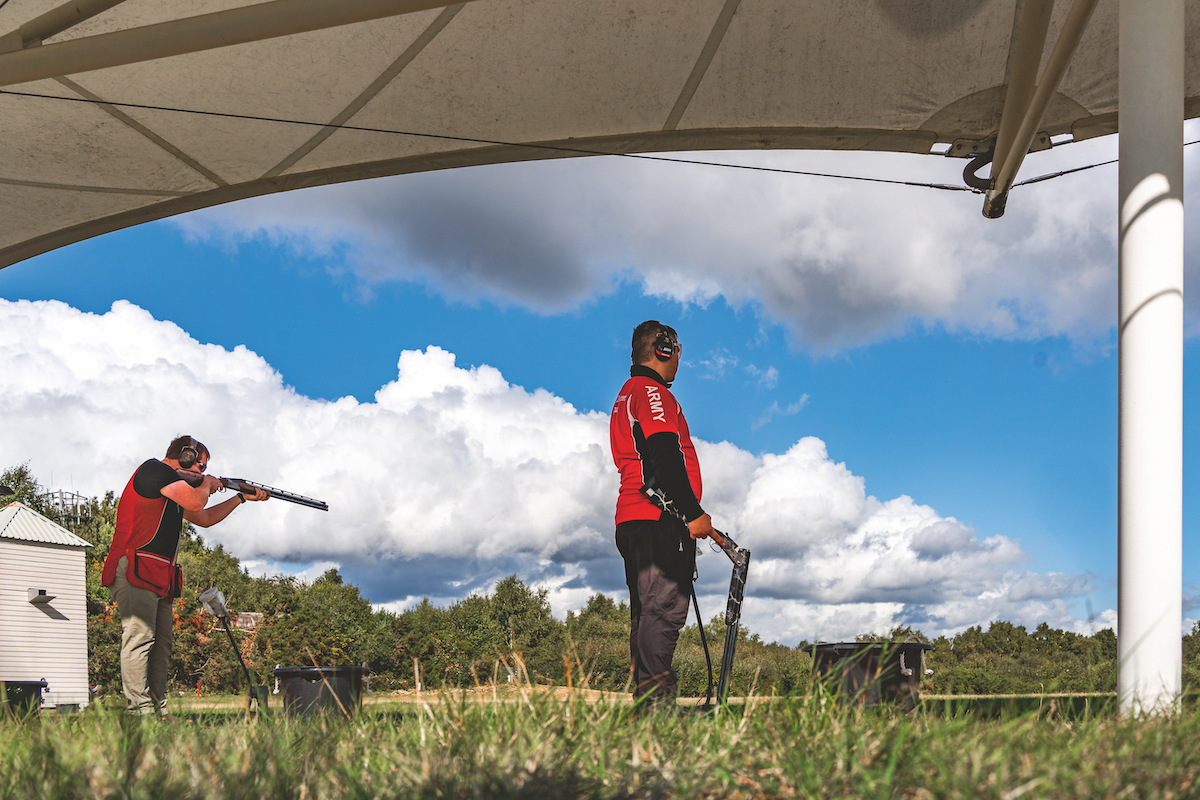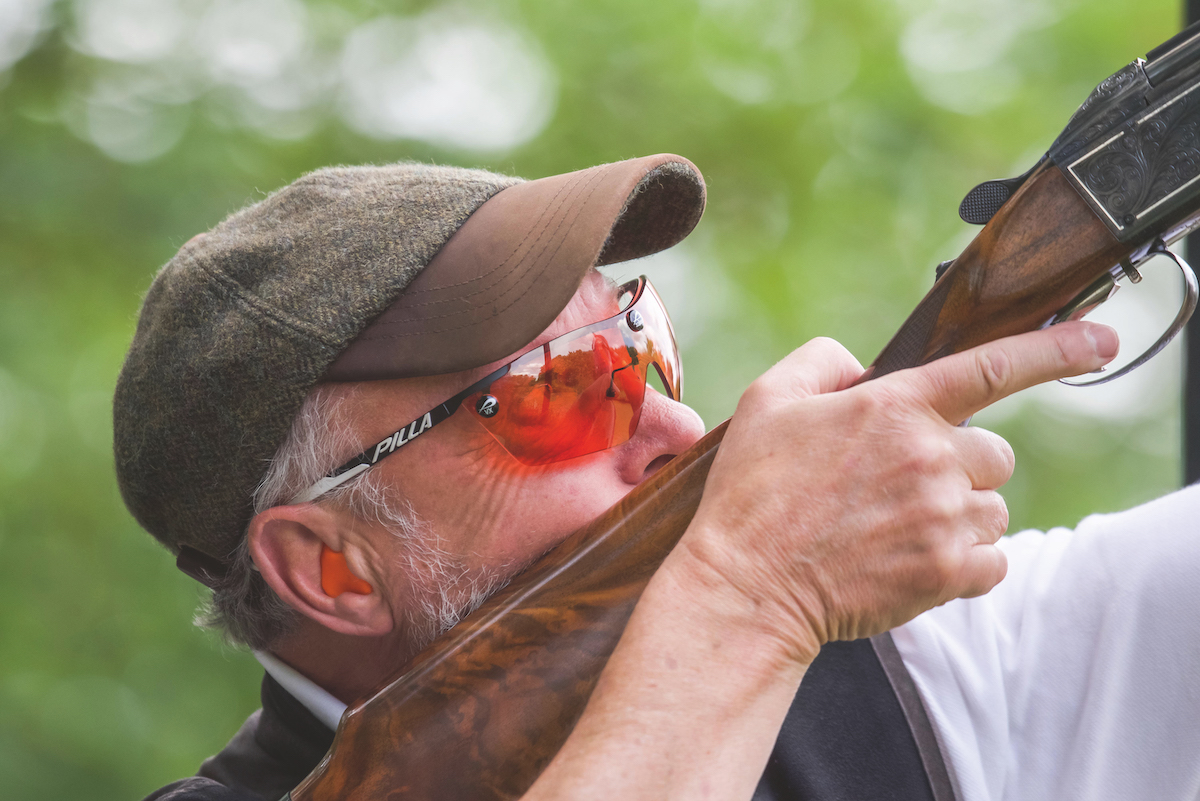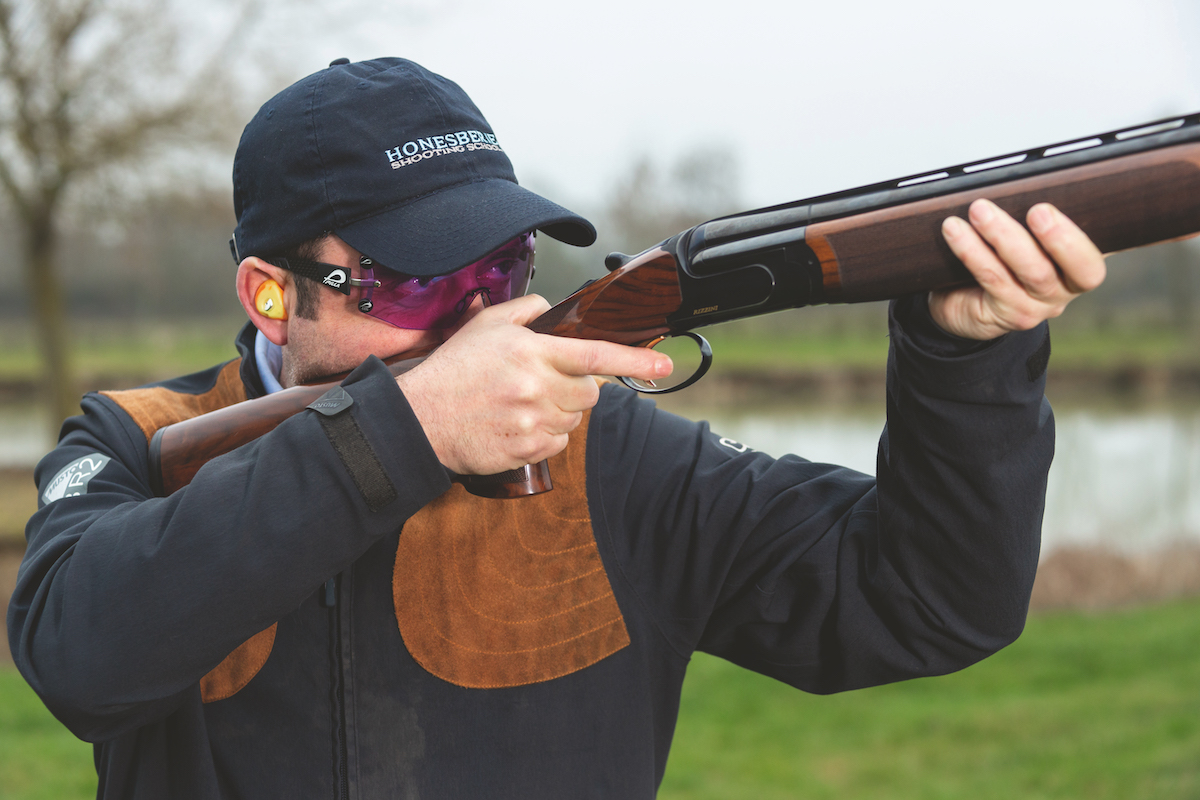How much forward allowance do you need to give?
Getting back to basics

Judging the amount of forward allowance (lead) you need to give a target is one of the most talked about topics amongst shooters.
The amount of lead we give to kill a bird is quite often instinctive and built on a comprehensive library of ‘sight pictures’ we’ve built up over the years.
Taking a look at forward allowance
I’m going to take a look at forward allowance in general terms, and look at ways of turning sight pictures into words.

Keeping it simple
Here are the simple basic facts about why you must give a target a certain amount of lead.
Let’s look at a standard crosser, a target that’s travelling square-on in front of the stand at 40 mph when it enters your expected kill zone. It’s flying at around head height.
In real terms how fast is the target actually moving? Well 40mph equates to just less than 60 feet per second.
Let’s assume that the shot from our chosen cartridge is going to travel at an average of 1,000 feet per second.

Now the only other thing we have to take into account is how far the shot has to travel before it hits the target in our intended kill zone.
For simplicity we’ll say the bird is going to be 100 feet away from the stand.
If the shot is moving at 1,000 feet per second, to travel the 100 feet to the target it’s going to take one tenth of a second (that’s 0.1 second.)
A tenth of a second, that’s nothing… isn’t it? Not exactly.
- In the tenth of a second that the front of the shot stream takes to travel to the clay, the clay has also been whizzing forward for the same amount of time.
- And if the target was travelling at 40mph, that’s 58.6 feet per second.
- So in the 1/10 of a second that it took for the shot to reach the target (divide 58.6 feet by 10) the target has actually travelled 5.86 feet since we pulled the trigger.
Forward allowance
This five or six feet is the amount of lead (forward allowance) we need to give if we want to kill the bird.
At this point it should also be blindingly obvious why if you shoot at a clay you’ll always, always miss behind. The bird has been and gone.
But don’t assume that to kill a 30 or 40 yard crosser all you have to do is give it a couple of yards lead. There are simply too many variables to take into account for this to be true.
However this example should make you think about the logistics of arranging the collision between the shot stream and the target.
We’ve established that hitting targets is all about arranging a collision between the stream of shot and the target, and hopefully we now understand the basic principle – that the muzzles must be ahead/in front of the bird when you pull the trigger – simply to allow the clay to run into the stream of shot.
So how to explain how much forward allowance is needed?
As there is always a slight delay before the shot stream collides with the clay, we can begin to understand and (hopefully) start to relate to how far the barrels need to be ahead of the target as you pull the trigger.
And this is often where the trouble starts.
Ask any member of your shooting squad how much lead they’re giving a particular bird and you’ll almost certainly get a vague, inexact answer.
The difficulty here is simply one of perception; six feet to one man might look like six yards to the eye of a fellow shooter.
And is the distance stated in real terms, say actually six feet ahead of the target, or what the amount of lead will look like to the naked eye from the stand in reality, say a couple of inches?
Do you suffer from stopping your gun? Here’s what you can do to correct it.
What does it mean when you’re told that you’re stopping the gun? Matt Clarke, editor of Sporting Gun says: “Stopping…
Secrets of successful clayshooting
Learn how to hit more targets by understanding the physics of clay pigeon shooting
Swinging the gun – how to improve your technique
Looking at all things swing related – and how getting it right can increase the number of targets you hit.
As such, and to try and get a bit of consistency, I reckon it would be much better if we refer to the angle of the muzzles, relative to the position of the bird, as we squeeze the trigger – rather than the actual or perceived distance the barrels are ahead of the target.

This must make things easier to comprehend, as the angle remains constant, irrespective of the distance between the gun and the bird.
And to try and make this concept even easier to grasp, rather than think in terms of actual angles, five, 10 or 20 degrees or whatever, I sometimes tell my pupils to try and imagine a clock face where the barrels are the hour hand.
Saying, ‘shoot at halfpast one’ is a darn sight easier to visualise than ‘give it 45 degrees!’

Give it a go yourself and see how you get on.
If there’s a group of you shooting a sporting layout I reckon it would be interesting for all concerned to hear how each member visualised the amount of forward allowance needed to smash particular targets.
We all learn from watching others shoot and receiving feedback so at the end of the day any help you can get to hit more targets is a bonus.
Keep the gun moving
- However you choose to arrange the collision, and irrespective of how you describe the amount of lead you’re giving, there’s one factor that remains absolute.
- You must keep the gun moving after pulling the trigger.
- Stopping your swing is one of the most common reasons for missing targets.
- If you stop the gun I can virtually guarantee you’ll miss behind.











